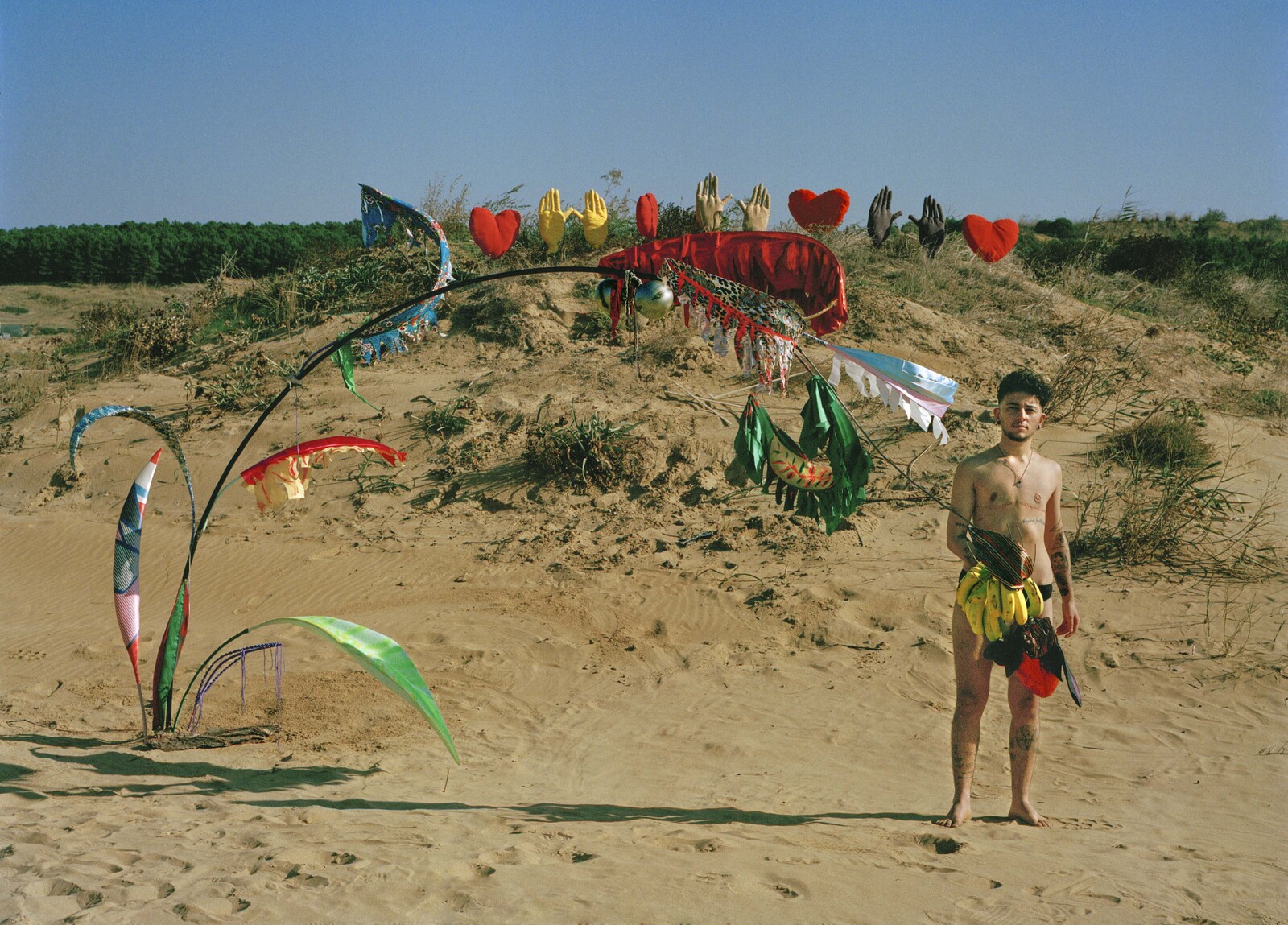November 26, 2022–April 10, 2023
Museumsplatz 1
1070 Vienna
Austria
Hours: Tuesday–Sunday 10am–6pm,
Wednesday 10am–8pm
press@mumok.at
Conjunctions, chains, and combinations; hybridization, creolization, and amalgamation; bastards, liaisons, aggregators, mycelia, rhizomes, and networked constellations. mixed up with others before we even begin investigates artistic phenomena that reconcile different, often contradictory entities within contemporary visual culture. The exhibition posits these forms of coming into contact and being related against the imperatives of autonomy, originality, and authenticity, and also against a Western notion of purity, which expedited in the modern age and is increasingly voiced once again on the global stages of politics and economy.
The featured artists enter into a dialogue with works from the mumok collection and objects from the collections of the Natural History Museum Vienna. The combination of their works with museum artefacts foregrounds methods that generate hybrids as an effective strategy, not only in artistic but also societal and political realms. mixed up with others before we even begin explores historical-cultural processes of mixing as a means to circumvent unvarying monoculture and to counter pervasive notions of infection and contamination with something positive. It encompasses moments of friendly encounter and gathering as well as those of the intense collision of opposites, too.
The sculptures of Ugandan artist Leilah Babirye celebrate the tension between local traditions and the global context through confronting traditional art from Africa with Western modernism. In this dialogue, she leverages mechanisms of exclusion on both sides. By integrating works of classical modernism from the mumok collection into her queer army of lovers, the artist appropriates the exoticizing view of African imagery that was fashionable in sophisticated early twentieth century European art circles.
The work of Nilbar Güreş, who grew up in Turkey, deals with the personal and social constraints engendered by heteronormativity and expressed in the biological and social categories of woman and man. In a sculpture developed especially for the exhibition—a tree of knowledge of sorts—she humorously demonstrates just how central the question of sexual orientation or preference and the relationship between the sexes is in this context.
In the case of Peruvian-raised Nicolás Lamas, it is less about the divides between the sexes, but rather the interfaces and fractures between art, science, technology, and everyday culture. The artist works with a repository of partly found, partly self-made objects and images, which he combines into ever new arrangements. In the exhibition, his works converge with objects from the Natural History Museum Vienna, rendering the ossified categories of art and science porous.
When Mexican-born artist Mariana Castillo Deball investigates diverse subjects such as the pre-Hispanic history of her country, mathematical models, or fables, myths, and other forms of literature, it is always objects that come to her attention. She questions these “non-humans,” as she refers to her items of choice, about what they have to say about the world—a world we humans construct around them, one we manipulate, define, and whose objects we use in different ways.
The work of the Berlin-based collective Slavs and Tatars addresses and performs multilingualism. In their artistic practice dedicated to the social and cultural contexts of the terrain “east of the former Berlin Wall and west of the Great Wall of China,” they deconstruct the notion of culture as something bound to a nation-state, religion, or language. Syncretism becomes a principle here. In the exhibition, Slavs and Tatars bring together their own language-based works with those from the collection that deal with body parts as an affective, sensual aspect of language.
Artists Anetta Mona Chişa and Lucia Tkáčová, who grew up in Romania and Slovakia, are responsible for the exhibition architecture of mixed up with others before we even begin. Designed for the previous exhibition Collaborations, the ruins of this display serve as both the conceptual and spatial framework for the current show. In addition, the duo presents a site-specific intervention that unfurls like a mycelium in the exhibition spaces. It proliferates to the point that the fungus changes the name of the museum written on the façade of the striking black building: “museum moderner kunst stiftung ludwig wien” alters anagrammatically to “let fungi guru wisdom meet minds turn us new,” leaving ample space for new interpretations.
Participating artists: Leilah Babirye, Mariana Castillo Deball, Anetta Mona Chişa & Lucia Tkáčová, Nilbar Güreş, Nicolás Lamas, Slavs and Tatars—with works from the mumok collection and objects from the collections of the Natural History Museum Vienna
Curated by Franz Thalmair.
Exhibition publication mixed up with others before we even begin
ed. by Franz Thalmair, Museum moderner Kunst Stiftung Ludwig Wien
Preface by Karola Kraus
Essays by Evelyn Annuß, Ann Cotton, Jule Govrin, Julia Grillmayr, Karin Harrasser and Franz Thalmair
Artist’s booklets by: Leilah Babirye, Mariana Castillo Deball, Anetta Mona Chişa & Lucia Tkáčová, Nilbar Güreş, Nicolás Lamas and Slavs and Tatars
Graphic design: Studio Kehrer
Text volume: ca. 112 pages, 6 booklets of 16 pages each, combined in one book jacket
Numerous ill. mostly in color
Language: German/English
Verlag der Buchhandlung Walther und Franz König, Köln 2022
Release date: December 14, 2022
ISBN (mumok): 978-3-903446-03-8
ISBN (König): 978-3-7533-0355-0
Please check our website for regular updates on our program. For further information please contact presse [at] mumok.at.


